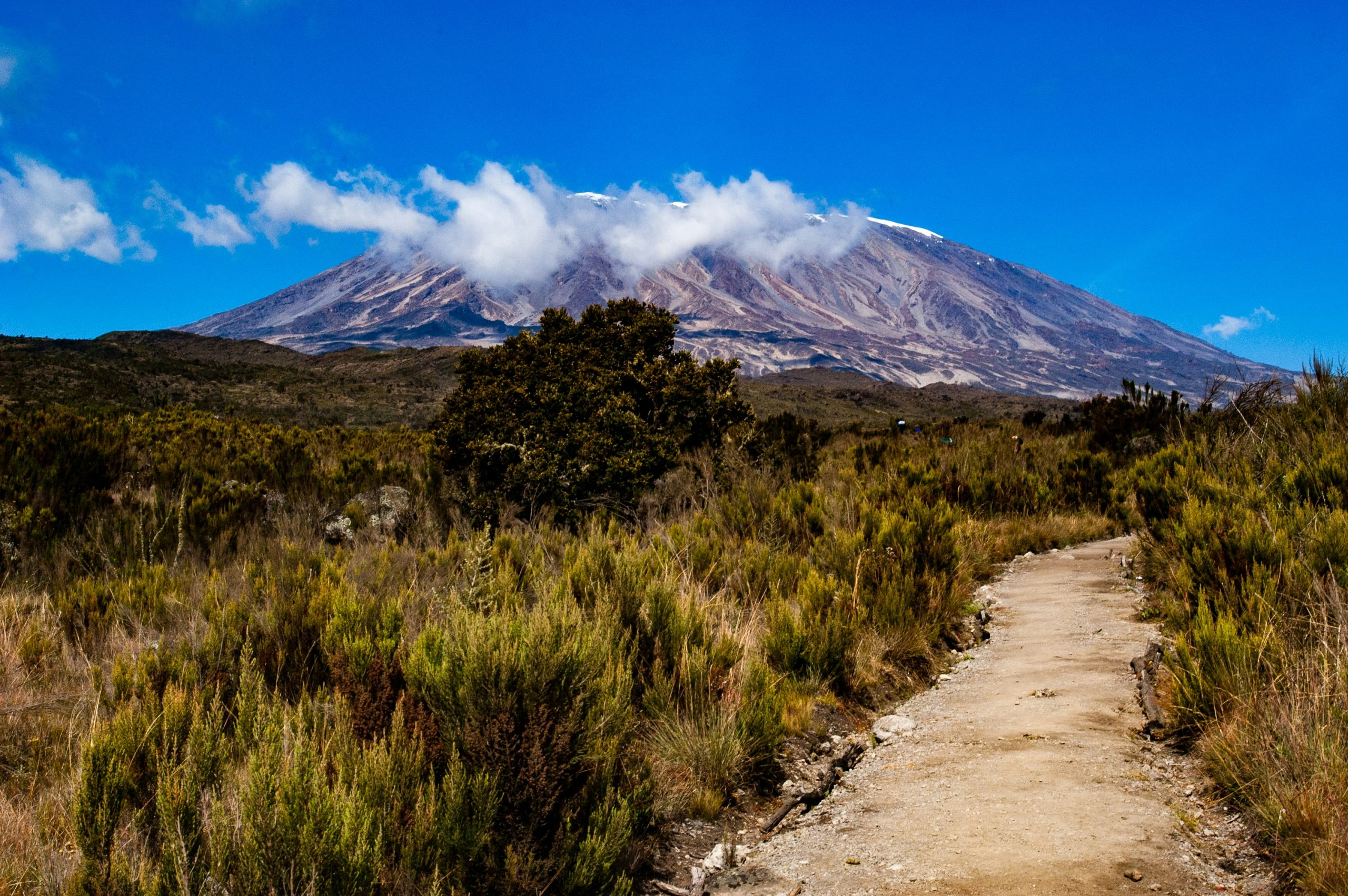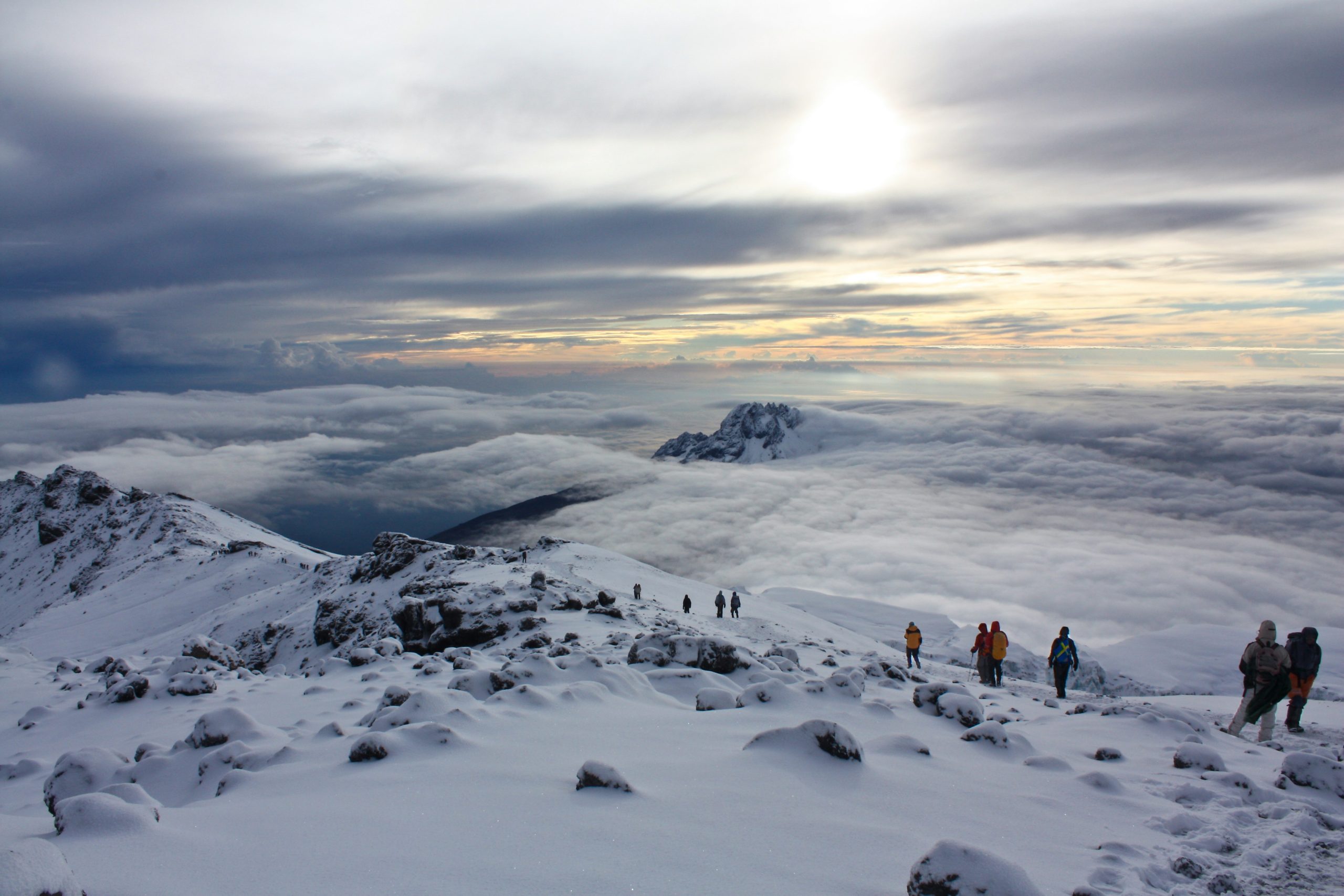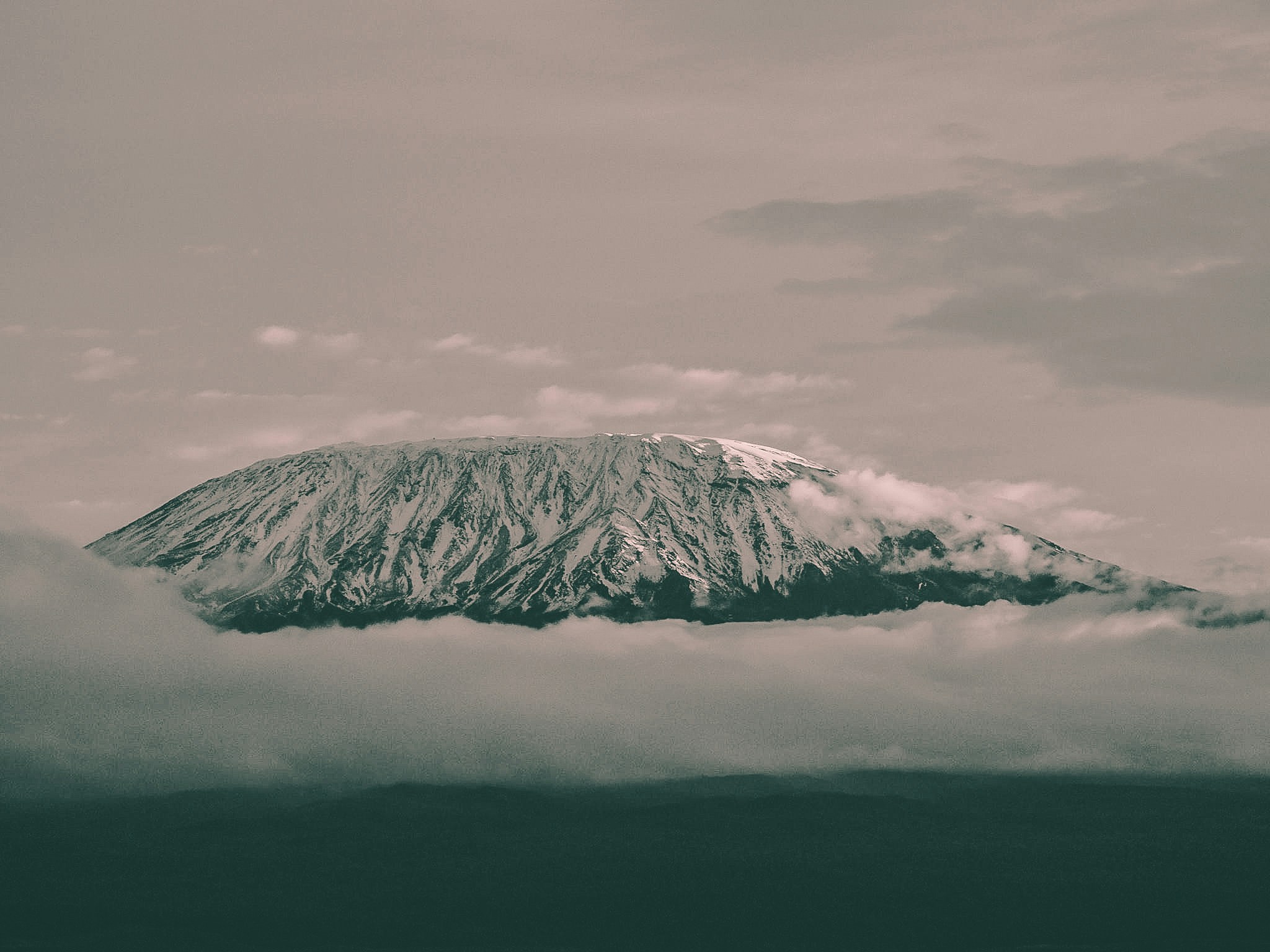Welcome to Mount Kilimanjaro National Park, home to the legendary Mount Kilimanjaro, Africa’s highest peak and the world’s tallest free-standing mountain, soaring to 5,895 meters (19,341 feet).
Mount Kilimanjaro National Park
Conquer the World's Highest Free-Standing Mountain
Welcome to Mount Kilimanjaro National Park, home to the legendary Mount Kilimanjaro, Africa’s highest peak and the world’s tallest free-standing mountain, soaring to 5,895 meters (19,341 feet). This dormant volcano, with its iconic snow-capped summit (though rapidly diminishing), is a UNESCO World Heritage site and one of the most sought-after trekking destinations globally. The park encompasses the mountain above the montane forest belt, protecting its unique ecosystems, from lush rainforests on the lower slopes to alpine deserts and the arctic-like summit zone.
Climbing Kilimanjaro is a challenging yet incredibly rewarding adventure, offering breathtaking vistas, diverse ecological zones, and the unparalleled achievement of standing on the “Roof of Africa.” It’s a journey that tests endurance and rewards with an unforgettable experience.


Why Visit/Climb Mount Kilimanjaro?
The ultimate goal for many – reaching Uhuru Peak.
A unique geological marvel.
While challenging, it requires no technical mountaineering skills, making it achievable for fit trekkers.
Ascend from tropical rainforest through heathland, alpine desert, to an arctic summit.
Panoramic views, dramatic volcanic landscapes, unique flora like giant groundsels and lobelias.
A profound sense of accomplishment upon reaching the summit.
Experienced guides, porters, and established campsites make the trek manageable.
The Kilimanjaro Climbing Spectacle
The ascent of Kilimanjaro is a multi-day trek through diverse and ever-changing landscapes, culminating in the challenging summit attempt.
- Multiple Routes: Several established routes lead to the summit, each varying in length, scenery, difficulty, and acclimatization profile. Popular routes include:
- Marangu Route (“Coca-Cola Route”): Oldest, most popular, hut accommodation.
- Machame Route (“Whiskey Route”): Scenic, good for acclimatization, camping.
- Lemosho Route: Very scenic, excellent acclimatization, camping, longer.
- Rongai Route: Approaches from the north, drier, good acclimatization, camping.
- Shira Route: Approaches from the west, starts at a higher altitude.
- Umbwe Route: Steepest and most challenging direct route.
- Gradual Ascent & Acclimatization: Key to success is “pole pole” (slowly slowly) to allow the body to adjust to the altitude.
- Summit Night: The final ascent, typically starting around midnight, is the most demanding part, aiming to reach Uhuru Peak at sunrise.
- Ecological Zones:
- Lower Slopes/Cultivation Zone (800m – 1,800m): Farms and villages (outside the park).
- Montane Forest (1,800m – 2,800m): Lush rainforest, home to colobus monkeys, blue monkeys, and diverse birdlife.
- Heath and Moorland (2,800m – 4,000m): Characterized by giant heathers, ericas, and unique flora like giant groundsels and lobelias.
- Alpine Desert (4,000m – 5,000m): A harsh, rocky, and barren landscape with extreme temperature variations.
- Arctic/Summit Zone (Above 5,000m): Glaciers, snowfields, and volcanic scree. Very little life.
Best Time to Climb Kilimanjaro
Dry Seasons (January - early March & June - October)
- Generally clearest skies, best weather, and warmest conditions (though it's always cold at the summit).
- January-March: Often warmer, clearer views, but can be a bit more crowded after New Year.
- June-October: Cooler than Jan-Mar, but still good conditions. Can be busier, especially July-August.
- Higher chance of successful summiting due to more stable weather.
Wet / Shoulder Seasons (April - May & November - December)
- April-May (Long Rains): Heaviest rainfall, muddy trails, cloud cover, snow on upper slopes. Many operators avoid this period. Potentially fewer crowds and lower prices if you find an operator.
- November-early December (Short Rains): Afternoon showers are common, trails can be muddy. Cloud cover can obscure views.
- Climbing is still possible, but conditions are less predictable and more challenging. The mountain can be beautifully lush and quiet.
Activities on/around Mount Kilimanjaro (Besides Summiting)
Kilimanjaro Summit Climbs: The primary activity, ranging from 5 to 9 days depending on the route. Requires a licensed guide and porters.
Lower Slope Hikes/Nature Walks: For those not aiming for the summit, guided day hikes are possible in the montane forest zone (e.g., to Mandara Hut on the Marangu Route, or through villages and coffee plantations on the lower slopes).
Shira Plateau Hikes: Some shorter treks explore the Shira Plateau without going to the main summit, offering stunning views and acclimatization.
Cultural Tours: Visit local Chagga villages on the foothills of Kilimanjaro to learn about their culture, farming practices (especially coffee and banana cultivation), and traditional irrigation systems.
Materuni Waterfall & Coffee Tours: A popular day trip from Moshi or Arusha, combining a hike to a beautiful waterfall with a hands-on coffee-making experience.
Lake Chala Visit: Explore this beautiful crater lake on the Kenya-Tanzania border, on the eastern flank of Kilimanjaro.


